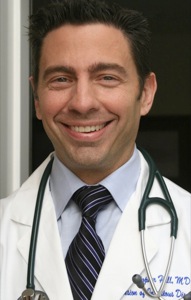-
- Hate crimes heads for possible senate vote
- Psychologists to review stance on gays
- New direction in HIV-vaccine research
- Need for cohousing growing as GLBT senior population grows
- Pa. professors move ahead of the pack on same-sex health benefits
- U.S. pastor defrocked for gay relationship
- National News Briefs
- World News Briefs
san diego
Neurosyphilis in gay men
Review of 170 possible cases sheds new light on risks
Published Thursday, 12-Jul-2007 in issue 1020
The increase in syphilis cases among gay men, particularly among those who are HIV positive, has been a concern for years. Most troubling is the occurrence of early neurosyphilis, when the infection spreads to the central nervous system and the brain.
Now a review of 170 possible neurosyphilis cases in four cities – Los Angeles (74), New York (47), Chicago (32) and San Diego (17) – has shed new light on the risks for HIV-positive men who have sex with men (MSM). The review was published in the June 28 issue of the Centers for Disease Control and Prevention’s (CDC) “Morbidity and Mortality Weekly Report.”
The report looked at cases over a 30-month period, January 2002 to June 2004, and narrowed them to 99 patients who had evidence of syphilis in their blood and physical symptoms compatible with neurosyphilis. Of the total, 57 self-identified as MSM, while 49 were HIV positive.
About 75 percent of the patients reported visual disturbances or new onset of headaches, while 12 percent had symptoms of acute meningitis. About half had no other clinical symptoms of the infection, while almost a quarter did not know they were infected with HIV.
The findings come as no surprise to Christopher Hall, chief of clinical affairs for the California Sexually Transmitted Disease Control Branch of the Department of Public Health. He sees them as an indictment of medical providers for not routinely screening gay men for syphilis. That practice would catch syphilis soon after infection, before it could develop more serious manifestations in the brain.
“Gay men who are sexually active with more than one partner should be screened for syphilis at least every six months, and those who are more active should be screened as frequently as every three months,” he says, citing guidelines issued by the CDC.
“If health care providers adhered to these guidelines, we would interrupt both new infections and the development of more severe symptoms such as neurosyphilis.”
When the blood test for syphilis comes back positive, Hall urges health care providers to carefully examine patients for subtle signs that the infection may have reached the central nervous system, “to identify that small cohort of individuals who are going to go on to develop early neurosyphilis.”
The other thing that needs to be done is follow-up testing after treatment, to make sure that the treatment worked. Hall says, “Follow-up just doesn’t happen.” That makes it difficult to determine if persons with recurrent syphilis have it because the treatment failed or because they became infected again.
About half of the cases of syphilis in California are among persons who are HIV positive. Hall sees three major reasons for this. First is serosorting: Persons who are HIV positive seek out sexual partners of the same status and decide not to use condoms. This facilitates the transmission of all sexually transmitted diseases, including syphilis.
This feeds on itself, creating a higher prevalence of the infection within a relatively closed pool of people having sex with each other. Finally, there is the likelihood that these persons have more sex with different people and hence increase their risk of exposure.
Gonorrhea is a localized infection but syphilis is a systemic one that can affect all parts of the body. Hall says syphilis can be found in the central nervous system and brain of about 30 percent of recently infected persons, regardless of their HIV status.
Oral sex is a route of infection that many people often do not consider. A 2004 study from Chicago attributed 13.7 percent of syphilis infections to oral sex, as the participants claimed to only engage in that practice. Most persons have a wider sexual repertoire, and so the true number of transmissions through oral sex is likely to be higher.
“Primary and secondary lesions for syphilis can occur in the mouth, throat, vagina and rectum. The primary lesions are painless and often missed or ignored by the patient,” says Hall. A blood test is required to make the diagnosis.
The treatment of choice is a single shot of penicillin G for early syphilis or a series of three shots for more advanced disease. The diagnosis of neurosyphilis requires hospitalization and intravenous administration of the drug for 10-14 days.
Penicillin helps to knock down the infection, but the immune system plays an important role in finishing off the job. The treatment regimen is the same regardless of one’s HIV status. However, persons with low CD4 counts should be followed more closely for the possibility of treatment failure. There are no good studies on how severely immunocompromised persons respond to treatment.
The one recommendation that is different for patients who are HIV positive is that they undergo a lumbar puncture to determine if the infection has reached the central nervous system.
Hall says syphilis is a rare infection that some doctors may never see during the course of their practice. He understands why many urban gay men choose to go to an STD clinic for all of their sexually related diseases testing, but he says all physicians should be regularly screening their sexually active patients for the infection.
|
|
Copyright © 2003-2025 Uptown Publications


